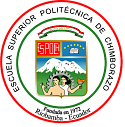3D indoor Propagation Simulator using Ray Tracing for 10-20 GHz frequency Band on GPU with NVIDIA-Optix under Unity graphic Engine
DOI:
https://doi.org/10.47187/perspectivas.5.2.203Keywords:
Indoor Propagation Simulator, Ray Tracing, GPU, Nvidia OPTIX, UnityAbstract
In this paper a novel Ray Tracing 3D indoor propagation simulator at frequencies of 10-20 GHz using GPU is presented. To carry out the simulation, software tools as Nvidia CUDA 10.0, CMake 3.19.4, Nvidia OPTIX 6.5, Microsoft Visual Studio Community 2017 and Unity 2018.4.21f1 was used. Two indoor with line-of-sight (LOS) scenarios were defined within the Faculty of Informatics and Electronics al the Escuela Superior Politécnica de Chimborazo (ESPOCH), one in the Microwave Laboratory, with minimum and maximum distances between Transmitter and Receiver of 0.34m (far field) and 7m, respectively; and the second stage is located in the hall on the ground floor of the FIE building with minimum and maximum distances of 6 and 12m, respectively. In those scenarios, both, real and simulated measurements were made with frequency hops of 1GHz. For the simulation, a ray tracing propagation technique under GPU using NVIDEA-Optix was used. By comparing simulated and measurement power, it was observed a difference of 10 dB approximately.
Métricas
References
ETSI 2021, p. 29 (3GPP TS 38.104 version 15.13.0 release 15)
S. Budiyanto, L. M. Silalahi, F. A. Silaban, N. P. Atmadja and I. M. Fajar Rahayu, "Coexistence Analysis of 5G and Satellite Networks at 3.5 GHz Frequency," 2020 IEEE International Conference on Communication, Networks and Satellite (Comnetsat), Batam, Indonesia, 2020, pp. 1-5, doi: 10.1109/Comnetsat50391.2020.9328989.
Y. Cho, H. -K. Kim, M. Nekovee and H. -S. Jo, "Coexistence of 5G With Satellite Services in the Millimeter-Wave Band," in IEEE Access, vol. 8, pp. 163618-163636, 2020, doi: 10.1109/ACCESS.2020.3022044.
E. Egea-Lopez, F. Losilla, J. Pascual-Garcia and J. M. Molina-Garcia-Pardo, "Vehicular Networks Simulation With Realistic Physics," in IEEE Access, vol. 7, pp. 44021-44036, 2019, doi: 10.1109/ACCESS.2019.2908651.
S. Parker et all. “GPU Ray Tracing”. Communications of the ACM. pp. 93-101. 2013. [Online] Available: https://www.classes.cs.uchicago.edu/archive/2016/winter/320011/papers/p93-parker.pdf
P. Nelimarkka. “Teaching unity3D in game programming module”. pp. 1-104. 2014. [Online] Available: URL: https://www.theseus.fi/bitstream/handle/10024/75534/bachelors_thesis_paavo_nelimarkka.pdf?sequence=1&isAllowed=y
A. Penzentcev. “Architecture and implementation of the system for serious games in Unity 3D”. Czech Republic. pp. 1- 68. 2015. [Online] Available: https://is.muni.cz/th/whosc/Thesis.pdf
L. Meiling. “Indoor radio propagation modeling for system performance prediction”. L’Institut National des Sciences Appliqu´ees de Lyon. Villeurbanne- Francia. pp. 1-126. 2013. [Online] Available: https://tel.archives-ouvertes.fr/tel-00937481/document
M. Madroñero, S. Meneses. “Análisis de la propagación de una señal mmWave en entornos indoor”. Colombia. pp. 1-91. 2016.
D. Mendes. “Caracterización indoor y ampliación de un rem (radio enviroment map) en el campus nord de la UPC”. Universidad Politécnica de Catalunya, Barcelona- España. pp. 1-99. 2015.
Downloads
Published
How to Cite
Issue
Section
License
Copyright (c) 2023 Mario Paguay Alvarado, Jefferson Ribadeneira, Kevin Israel Freire Lema, Ana Logroño

This work is licensed under a Creative Commons Attribution 4.0 International License.
Copyright
The authors of the manuscripts will retain their copyright on their articles published in Pespectivas Journal. These rights allow the authors to present their manuscripts in public, prepare derivative works, reproduce them physically by printing and distribute them on their social or research networks. These rights will remain unchanged as long as the authors respect the publication and free access policy of Perspectivas Journal.
Publication Rights
Perspectivas Journal reserves all first publication rights on each of the articles that the authors have sent to its review and publication process. It implies that authors will only exercise their copyright if they state the source and origin of the publication correctly, mainly when they distribute, share, present, or use their articles' total or partial content.














